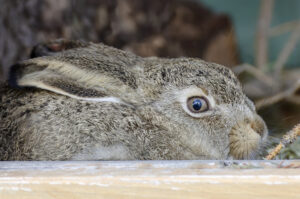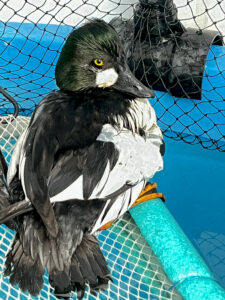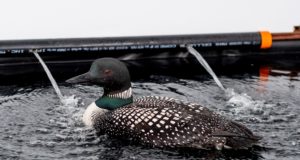By Georgia Bignold, AIWC Volunteer
How many times have you been enjoying nature and heard a rapid tapping in the distance? Many of you likely thought to yourself that it was a local woodpecker making all the racket. However, it might surprise you that the tapping sound you hear isn’t always coming from the same type of woodpecker! In fact, there are 13 different species of woodpeckers known to be found in Alberta, all of which have unique attributes that can be used to identify them:
- Downy Woodpecker
In Alberta, the Downy Woodpecker is the most spotted woodpecker species, and it resides in the province year-round. They sport a black and white pattern, most of which is black. The males are distinctive due to a red spot on the back of their heads. They are of average size measuring 14-17 cm long with a wingspan of 25-30 cm.
- Northern Flicker
The Northern Flicker is another species of woodpecker that resides in Alberta year-round but is more commonly spotted in the summer months. They can be identified by their brown feathers accented by black and white spotted plumage and a white rear spot. Like the Downy, males also have a red head spot; however, it is located closer to the nape. They are of large size reaching 28-31cm in length and 42-51cm in wingspan. They can be seen in open woods, parks, and suburbs, as well as forest edges.
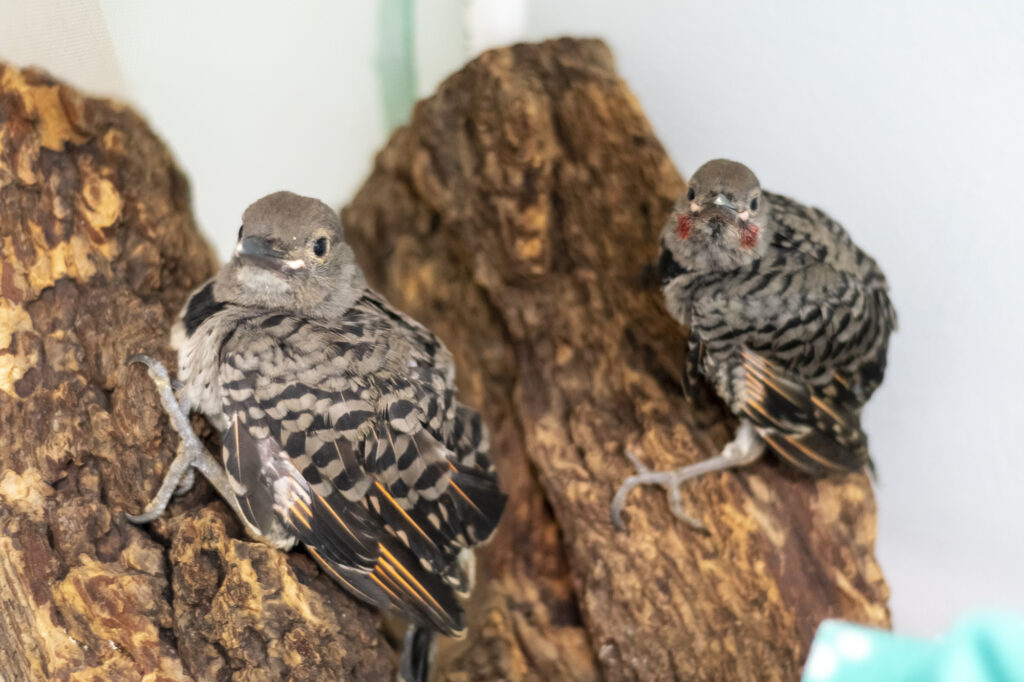
- Hairy Woodpecker
The Hairy Woodpecker is most seen in the winter months, even though they remain in Alberta for the summer. They can be identified by their black and white covering and a large white back spot. Like the Northern Flicker, the Hairy also has a splash of red towards the back of the head. However, in overall appearance they are very similar to the Downy and can be difficult to differentiate. They are of average size measuring 18-26 cm in length with a 33-41 cm wingspan. You can find Hairy Woodpeckers on large trees in woodland regions, as well as in parks and other suburban areas.
- Pileated Woodpecker
The Pileated Woodpecker is an introduced species to Alberta that resides here throughout the year. They can best be identified by their bright red head crests; they also sport a largely black body with a white stripe and white under the wings. The males can be identified by an extra red stripe across the cheek. These birds are the largest of the North American woodpecker species measuring 40-49 cm in length with a 66-75 cm wingspan. Pileated Woodpeckers are found in mature forests but also frequently visit backyard feeders in suburban areas.
- Yellow-bellied Sapsucker
These are some of the least common woodpeckers in Alberta; they are only present during summer months. These birds are mainly black and sport a red forehead; males have an additional red throat. They are relatively small measuring 18-22 cm in length and 34-40 cm in wingspan. Deciduous forests are the most common location they can be found in.
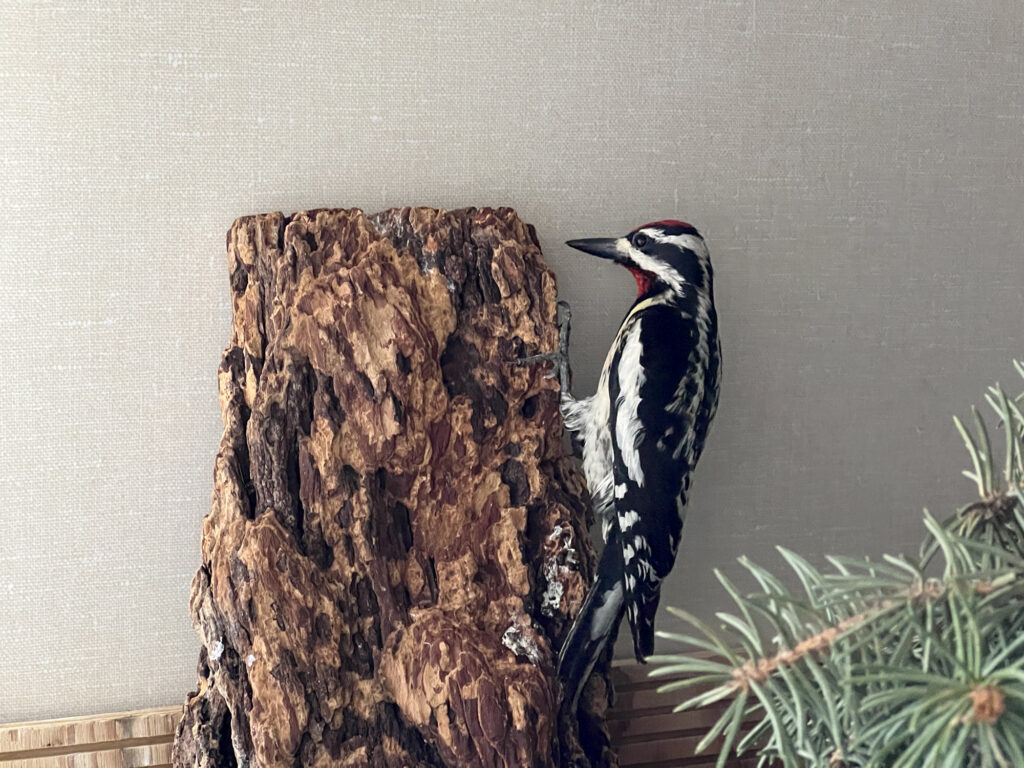
- American Three-toed Woodpecker
It is rare to see one of these birds, even though they reside in Alberta year-round. Their distinct yellow foreheads contrast starkly against the rest of their black bodies and white underbellies; their wings and sides also display white spots and barring. Though similar in appearance, they are smaller than the Black-backed Woodpecker measuring 21-23 cm in length with a 37-39 cm wingspan. They prefer to inhabit insect dense forests and, therefore, these are the most likely place to spot them.
- Black-backed Woodpecker
Even more rare is the Black-backed Woodpecker. These birds reside in Alberta throughout the year but are most often seen in winter. They are black with white stripes on their sides and a white belly. Unlike the American Three-toed, only the male has a yellow head and are slightly larger measuring around 23 cm in length with a 40-42 cm wingspan. If you’re hoping to spot one, recently burned forests are your best bet.
- Lewis’s Woodpecker
Akin to the Pileated, Lewis’s Woodpecker is an introduced species to Alberta but conversely, they migrate during the winter. They are very distinct in appearance with a dark back, dark red face, pink underbelly, and a grey collar around their necks. Average in size, Lewis’s Woodpeckers measure 26-28 cm in length with a 49-52 cm wingspan. Open forests and riparian woodlands or grasslands are the most common habitats to find these birds in.
- Red-bellied Woodpecker
The Red-bellied Woodpecker is rare to see in Alberta and is another introduced species. They can be identified by their pale red underbelly and black and white markings over the back. Males have a red cap like that of the Red-headed Woodpecker; however, females lack the cap and only have red napes. They are also generally smaller than the Red-headed, measuring 24 cm in length and 33-42 cm in wingspan. Woodlands and forests are the best places to spot these birds.
- Red-headed Woodpecker
These birds are another introduced species in Alberta and are rarely seen. They are easiest to identify due to their distinct red heads and bold black and white patterning. They are smaller, measuring 19-23 cm long with a 42 cm wingspan. These are most frequently spotted in open woodlots, farms, swamps, or pine savannas.
- Red-breasted Sapsucker
Very rarely spotted, the Red-breasted Sapsucker is also an introduced species to Alberta. These birds are distinguished by their dark red breasts and heads, in addition to the white line that runs down their wings. They are a medium-sized woodpecker at 20-22 cm long with a 37-41 cm wingspan. They are most common to coniferous forests.
- Williamson’s Sapsucker
Another introduced species to the province, the Williamson’s Sapsucker is a migratory species and is only found in Alberta during the summer. Males are distinguished by their glossy black backs with a red throat, yellow belly, and patches on their wings. Females have brown heads and the typical black and white back with a black breast. They are average in size at 21-25 cm with a wingspan of 43 cm. They can be found in mountainous coniferous forests in summer and pine and oak forests in winter.
- Acorn Woodpecker
The seventh introduced woodpecker species, the Acorn Woodpecker, is extremely rare to spot, but when you do, you’ll know! They have distinctive clown white faces, red caps, and black almost everywhere else, except for the belly which is white with black markings. Males have redder feathers on their caps than females. They are of average size measuring 19-23 cm long with a 35-43 cm wingspan. You are most likely to find these birds in oak forests.
All 13 wonderful species of woodpeckers in Alberta are unique and contribute importantly to their ecosystems; let’s do our best to protect and appreciate this amazing diversity for years to come!
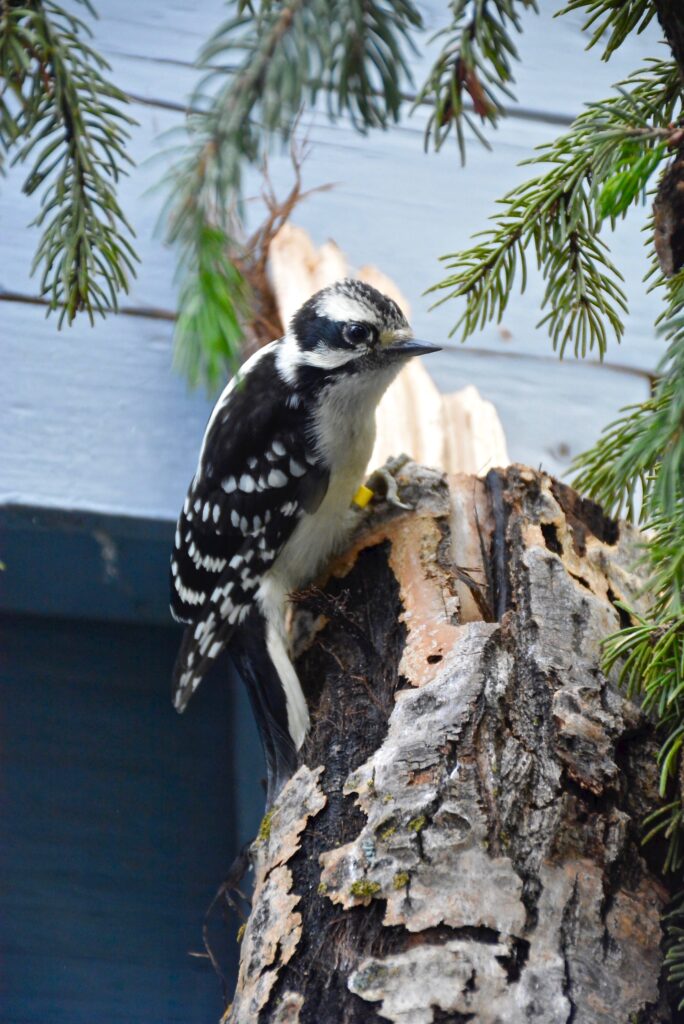
References
- Birder, D. (n.d.). Williamson’s Sapsucker—South Dakota Birds and Birding. Retrieved August 19, 2022, from https://www.sdakotabirds.com/species/williamsons_sapsucker_info.htm
- Emma. (2021, December 28). Everything You Need to Know About Woodpeckers in Alberta—Bird Advisors. Bird Advisors. https://www.birdadvisors.com/woodpeckers-alberta/
- Lewis’s woodpecker. (n.d.). Nature Conservancy Canada. Retrieved August 18, 2022, from https://www.natureconservancy.ca/en/what-we-do/resource-centre/featured-species/birds/../../lewiss-woodpecker.html
- Scott. (n.d.). The 8 Woodpecker Species Found in Alberta! (ID Guide). Bird Watching HQ. Retrieved August 19, 2022, from https://birdwatchinghq.com/woodpeckers-in-alberta/

